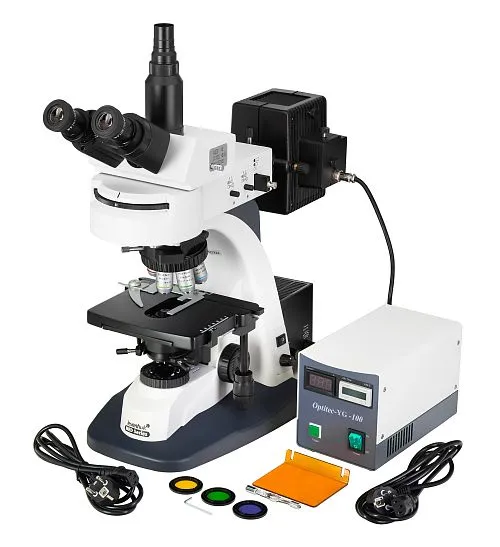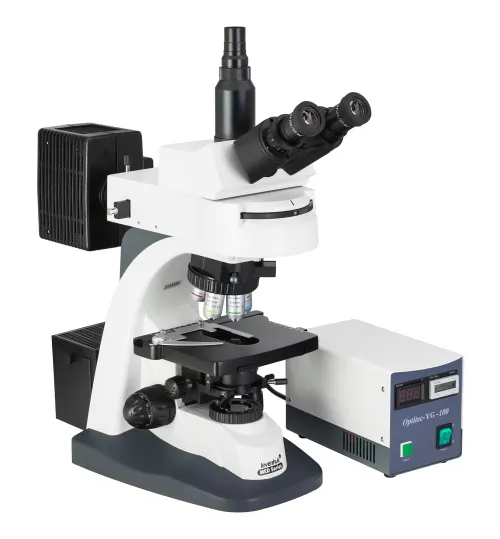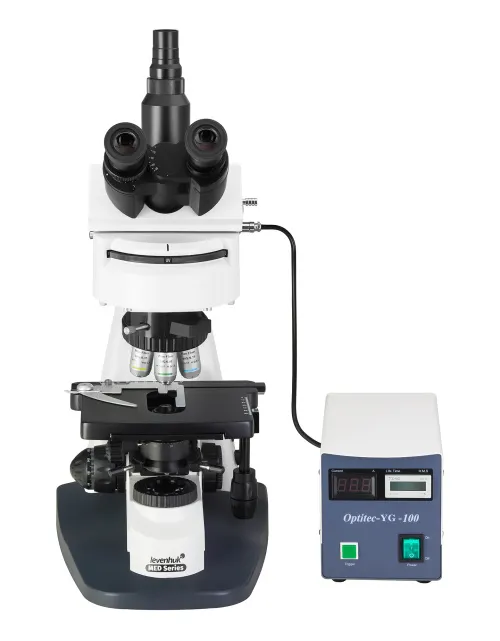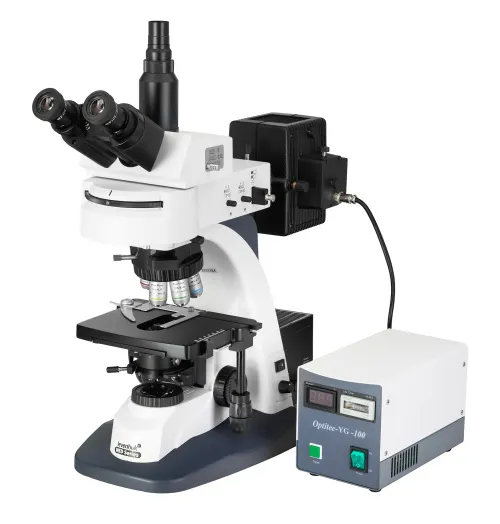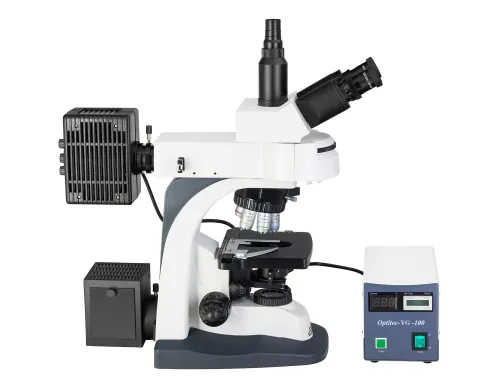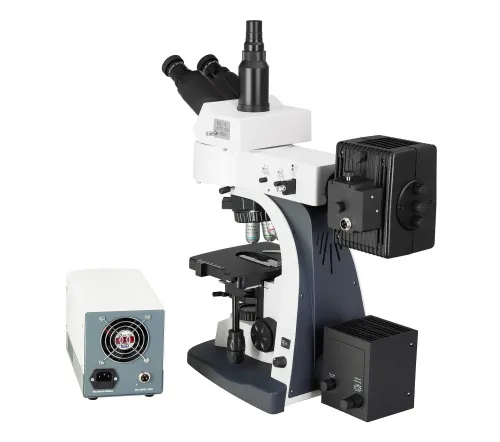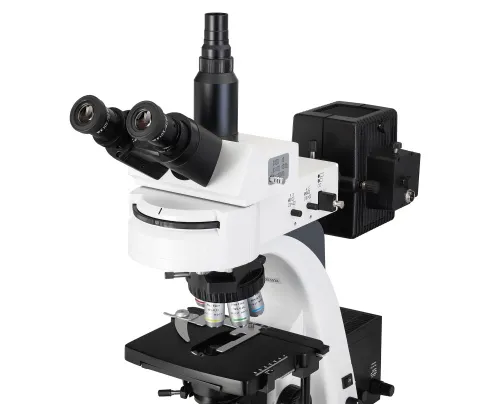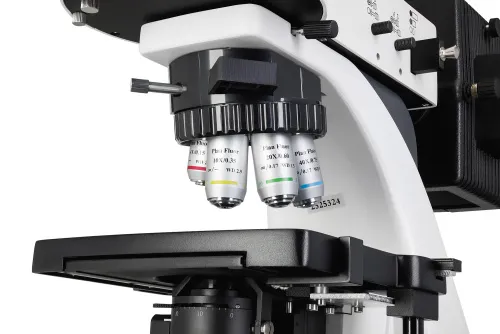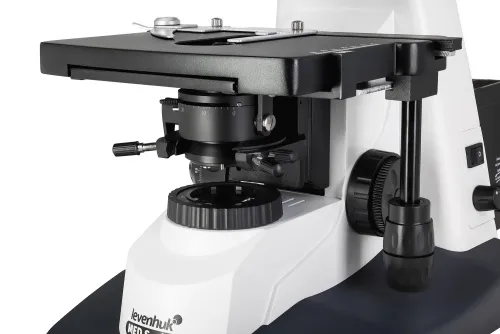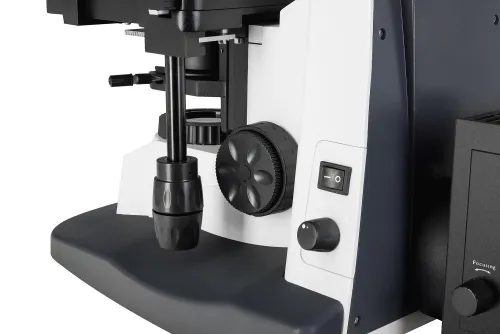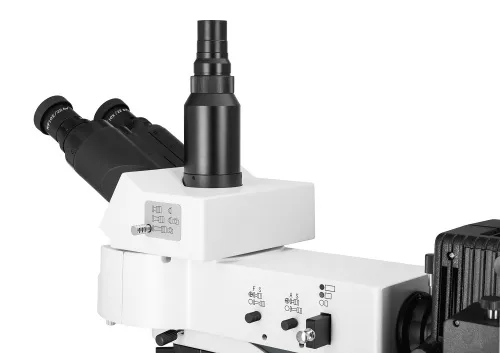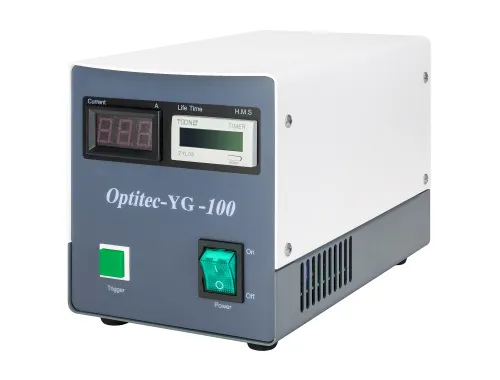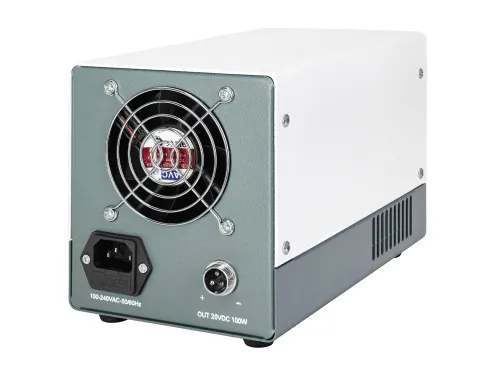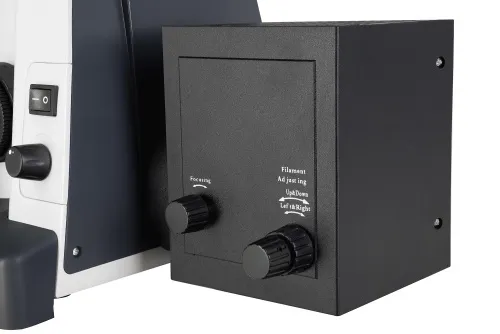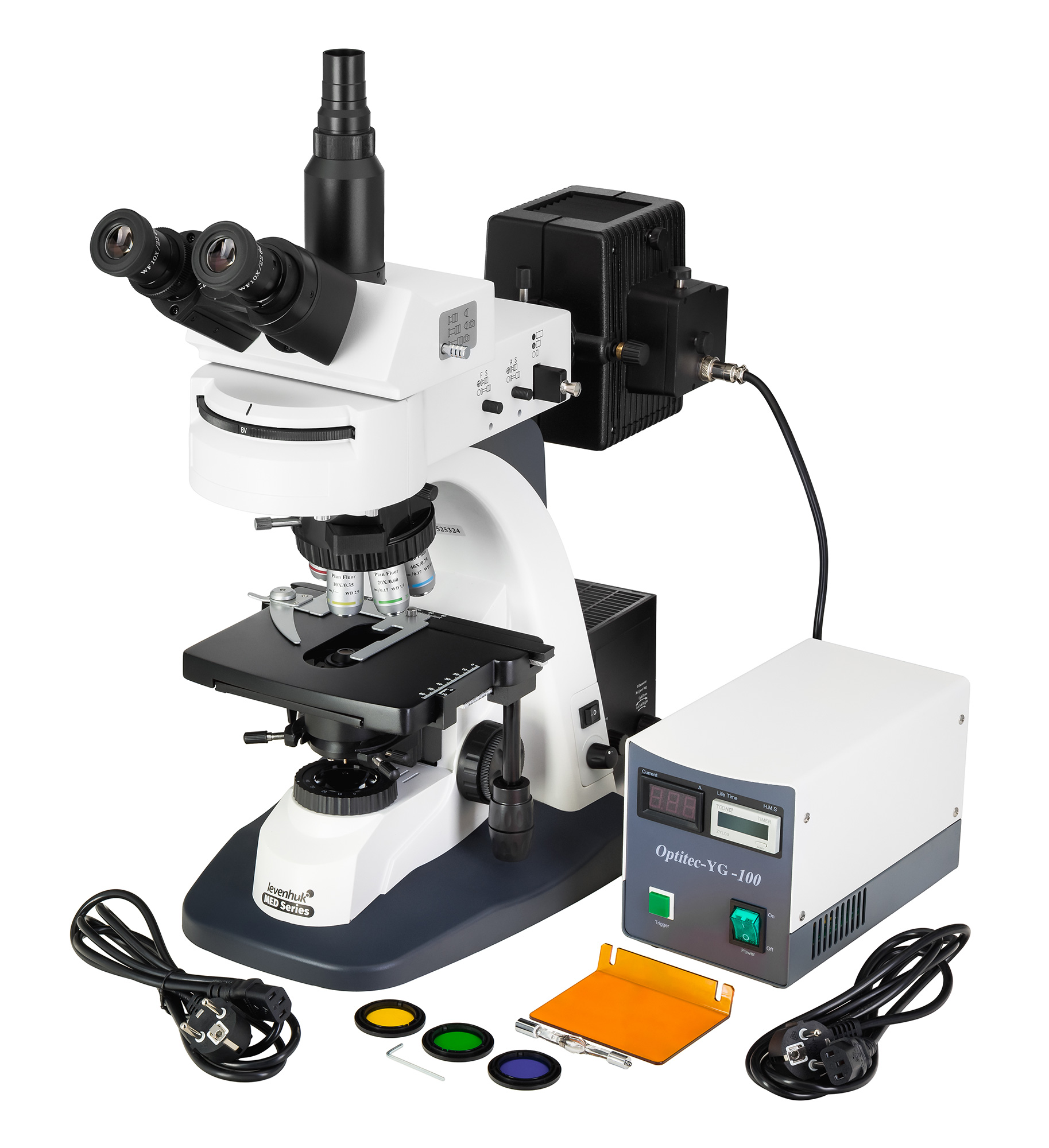Levenhuk MED PRO 600 Fluo Microscope
Professional fluorescence microscope. Semi-apochromatic infinity-corrected optics
| Product ID | 73383 |
| Brand | Levenhuk, Inc., USA |
| Warranty | lifetime |
| EAN | 5905555005102 |
| Package size (LxWxH) | 70x50x42 cm |
| Shipping Weight | 19.22 kg |
Levenhuk MED PRO 600 Fluo is a professional laboratory microscope for observing in a bright field or conducting research using the fluorescent method. It is excellent for studying living microorganisms at the molecular, cellular, and subcellular levels. The Levenhuk MED PRO 600 Fluo fluorescence microscope is a good choice for retrofitting a medical or research laboratory.
Semi-apochromatic optics and wide-field eyepieces render a clear, detailed, and bright image. You can use this microscope for classic "dry" observations. In addition, it allows for observations using immersion methods. To enhance the image contrast, light filters are recommended (three filters are included). The trinocular head is inclined at 30°. The trinocular head consists of a binocular visual part and an ocular tube for installing a digital camera in it (purchased separately).
The illumination system consists of a bright halogen lamp that features a brightness adjustment, and a removable condenser. The fluorescence unit includes filter units, a mercury lamp and radiation shield. The light is powered by an AC supply (adapter included). The microscope features coarse and fine focusing. A stage is moveable along two axes, and it also features a mechanical scale. The interpupillary distance is adjustable.
Features:
- For observations using a fluorescence method
- Semi-apochromatic infinity-corrected optics
- The microscope revolving nosepiece is designed for six objectives (two sockets for additional objectives)
- Adjusting illumination system
- Abbe condenser N.A. 1.25
- AC power supply
The kit includes:
- Microscope
- Semi-apochromatic objectives: 4x, 10x, 20x, 40x
- Wide-field eyepieces: WF 10x/22mm (2 pcs)
- Filters: blue, green, yellow
- UV-reflection unit
- AC adapter
- User manual and lifetime warranty
Caution: Remember that the power supply in the US and Canada is 110V, and it is 220-240V in most European countries. Please refer to the specifications table for the correct voltage and never attempt to plug a 110V device into 220V outlet and vice versa without using a converter.
Some things that you can see under a microscope:





| Product ID | 73383 |
| Brand | Levenhuk, Inc., USA |
| Warranty | lifetime |
| EAN | 5905555005102 |
| Package size (LxWxH) | 70x50x42 cm |
| Shipping Weight | 19.22 kg |
| Type | biological, light/optical |
| Microscope head type | trinocular |
| Optics material | optical glass |
| Head | 360 ° rotatable, with switching (dividing) luminous flux |
| Head inclination angle | 30 ° |
| Magnification, x | 40 — 400 |
| Eyepiece tube diameter, mm | 23.2 mm (third vertical tube), 30mm (binocular head) |
| Eyepieces | WF10x/22mm (2 pcs.) |
| Objectives | infinity-corrected semi-apochromatic fluorescence objectives: 4x, 10x, 20x, 40x |
| Revolving nosepiece | for 6 objectives |
| Interpupillary distance, mm | 50 — 75 |
| Stage, mm | 180x160 |
| Stage moving range, mm | 85/50 (movement in horizontal (X and Y) directions) |
| Coarse focusing travel, mm | 48 |
| Stage features | mechanical double-layer |
| Condenser | Abbe N.A. 1.25 with an iris diaphragm and filter holder |
| Diaphragm | iris, field |
| Focus | coaxial, coarse and fine (0.002mm) |
| Body | metal |
| Illumination | halogen, fluorescent |
| Brightness adjustment | ✓ |
| Power supply | 110–220V, 50/60Hz |
| Light source type | halogen lamp: 12V/30W |
| Adapter | AC adapter |
| Light filters | blue, green, yellow |
| User level | experienced users, professionals |
| Assembly and installation difficulty level | complicated |
| Fluorescent module | "G", "B", "BV", "V", "U" filters; mercury lamp (100W) with an external power supply; radiation shield |
| Application | laboratory/medical |
| Illumination location | lower |
| Research method | bright field, fluorescence |
| Pouch/case/bag in set | dust cover |
We have gathered answers to the most frequently asked questions to help you sort things out
Find out why studying eyes under a microscope is entertaining; how insects’ and arachnids’ eyes differ and what the best way is to observe such an interesting specimen
Read this review to learn how to observe human hair, what different hair looks like under a microscope and what magnification is required for observations
Learn what a numerical aperture is and how to choose a suitable objective lens for your microscope here
Learn what a spider looks like under microscope, when the best time is to take photos of it, how to study it properly at magnification and more interesting facts about observing insects and arachnids
This review for beginner explorers of the micro world introduces you to the optical, illuminating and mechanical parts of a microscope and their functions
Short article about Paramecium caudatum - a microorganism that is interesting to observe through any microscope

